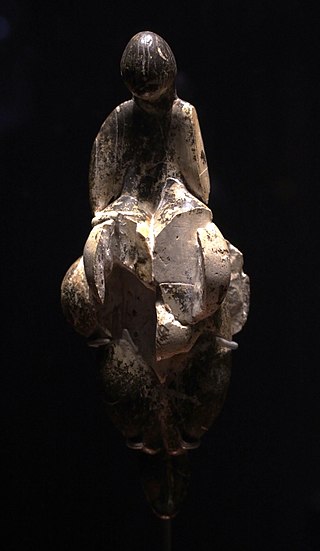Top Qs
Timeline
Chat
Perspective
Venus of Lespugue
Paleolithic venus From Wikipedia, the free encyclopedia
Remove ads
The Venus of Lespugue is a Venus figurine, a statuette of a female figure of the Gravettian, dated to between 26,000 and 24,000 years ago.
Discovery
It was discovered in 1922 in the Rideaux cave of Lespugue (Haute-Garonne) in the foothills of the Pyrenees by René de Saint-Périer (1877-1950).
Approximately 6 inches (150 mm) tall, it is carved from tusk ivory, and was damaged during excavation.
Features
Of all the steatopygous Venus figurines discovered from the Upper Paleolithic, the Venus of Lespugue, if the reconstruction is sound, appears to display the most exaggerated female secondary sexual characteristics, especially the extremely large, pendulous breasts.
According to textile expert Elizabeth Wayland Barber,[1] the statue displays the earliest representation found of spun thread, as the carving shows a skirt hanging from below the hips, made of twisted fibers, frayed at the end.
Remove ads
Location
The Venus of Lespugue resides in France, at the Musée de l'Homme.
See also
Notes
External links
Wikiwand - on
Seamless Wikipedia browsing. On steroids.
Remove ads


